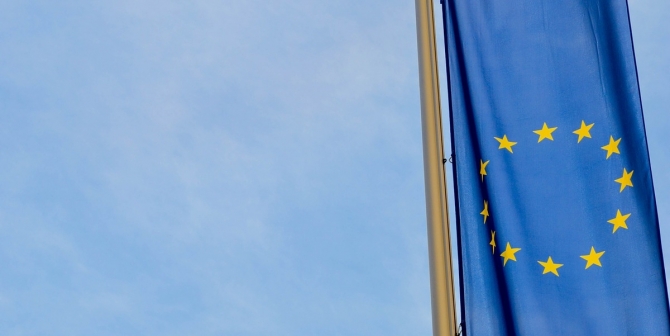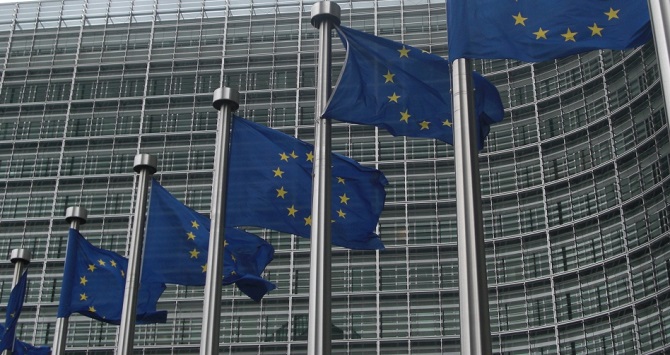Ross Biggam, Director General of the Association of Commercial Television in Europe, explains that he is among the few hundred people around the EU, predominantly in Brussels’ EU quarter, who were last week putting the finishing touches to responses to the Audiovisual Media Services Directive consultation. He was drafting a response on behalf of European commercial broadcasters, but here offers some of his own analysis on the issues involved.
As we have done every time we’ve been asked since 1989, Europe’s commercial broadcasters will call for deregulation of the commercial communications provisions in AVMS, express our opposition – on grounds of principle and practice – to European content quotas and call for the retention of the country of origin rules against what is now a growing protectionist tendency in many EU member states. Meanwhile in other offices around the corner from mine, producers will be drafting responses demanding more support for independent content, newspaper publishers will be expressing their vehement opposition to their services being included in audiovisual regulation (even when those services are increasingly audiovisual in nature), public broadcasters will argue for regulatory protection against platforms, new media operators will warn against regulation of the internet, and so on.
Now, there is nothing wrong with any of the stakeholder positions outlined above. They’re all legitimate input to this exercise. But the outcome will surely be that the consultation will produce a lot of legal and political arguments for Commission officials, maybe some data on market developments but is unlikely to produce any surprises, especially as the issues were already rehearsed in a Commission Green Paper in 2013.
So I am in this piece not rehearsing my employer’s response (it will be online soon enough) but rather, in a personal capacity, identifying an important missing element, namely the long-term political vision. What’s the future of European media? We know that broadcast television has proved resilient in the face of constant predictions from internet cheerleaders of its imminent demise. But the world is changing – so yes, linear TV will remain strong for a good few years yet… but what about in 2027? Of course people will still want to watch live sport, original drama, authoritative news and entertaining shows. But who will be making and distributing the content that people will still be watching, and on which devices and via which networks will they watch them? The reason I mention 2027 is that, realistically, whatever rules are agreed in the AVMS process will still be in force then, given the timelines the Commission has to work with.
So, what will the market look like in 2017? And which EU-level rules will be necessary and helpful in 2027?
Of course, nobody knows. When the directive was last revised, the received wisdom was that mobile broadcast was the future, with short-form “mobisodes” of series designed for viewing on a GSM handset being, briefly, all the rage. That, however, was before someone invented the tablet computer and we discovered that there was, after all, a market for mobile TV content just on rather better quality screens. Clearly, there will be more radical change in the lifetime of AVMS II, and media businesses will need to rethink every aspect of our operations to be able to adapt to whatever market and technological changes will occur.
Shouldn’t EU regulators do the same?
I would argue – I don’t do so in our consultation response, as that is focussed more on detail – that the Commission should, even if merely as an experiment, start with “a blank sheet of paper”… What would we harmonise if we were starting from scratch? The current approach of building on an accumulation of two decades’ political compromises has produced a very uneven harmonisation of EU media law. So we have in-depth harmonisation of advertising, sponsorship and product placement – by far the most detailed, and operationally complex, provisions in the directive, almost all of them dating back to 1989. Although few papers from the mid-1980s negotiations are available online, it is probable that this level of harmonisation reflects the changes the industry was undergoing at that time: the launch of commercial television in Germany, Italy and Spain and the equally transformative reforms in France (privatisation of TF1) or the UK (ITV franchise auction). Advertising-funded television was then the new, disruptive player in media markets (in so far as there were ‘markets’ in the pre-competitive era of the early 1980s). As a result, we have detailed rules around how many seconds of advertising are permissible in an hour (with the definition of an “hour” having been litigated all the way to the EU’s supreme court).
Yet the directive has virtually nothing to say about freedom of the media. Even a simple clause requiring national regulators to be independent is apparently too controversial for some Member States. Nor does AVMS impose any obligations on Member States or broadcasters as to freedom of information, beyond a rather odd clause harmonising the conditions under which news bulletins can include footage of the winning goal from that day’s football matches, something which even this author, a borderline-obsessive football fan, does not regard as an important function of news in a democratic society.
We don’t need to invoke the old standby of the visitor from Mars. My real life visitors from the US, Argentina and China have in recent months expressed surprise when they learn exactly what is – and is not – regulated at EU level.
So, what would the blank sheet of paper approach produce? What will still be relevant in 2027? The country of origin rule should be uncontroversial – absent this rule, we don’t really need a directive at all. Other provisions need a major, honest review: are quotas to aid independent producers sensible on the era of the super-indie, some of whom are larger than the broadcasters whom they supply? Are there better ways of ensuring the policy objective of plurality in supply of content? Should the EU say more about overarching issues of media freedom and less about daily operational issues?
It’s a challenging debate, and one that can only be addressed by Commissioners, not civil servants. But without it, we won’t get the regulatory framework right.
This article gives the views of the author and does not represent the position of the LSE Media Policy Project blog, nor of the London School of Economics and Political Science.






